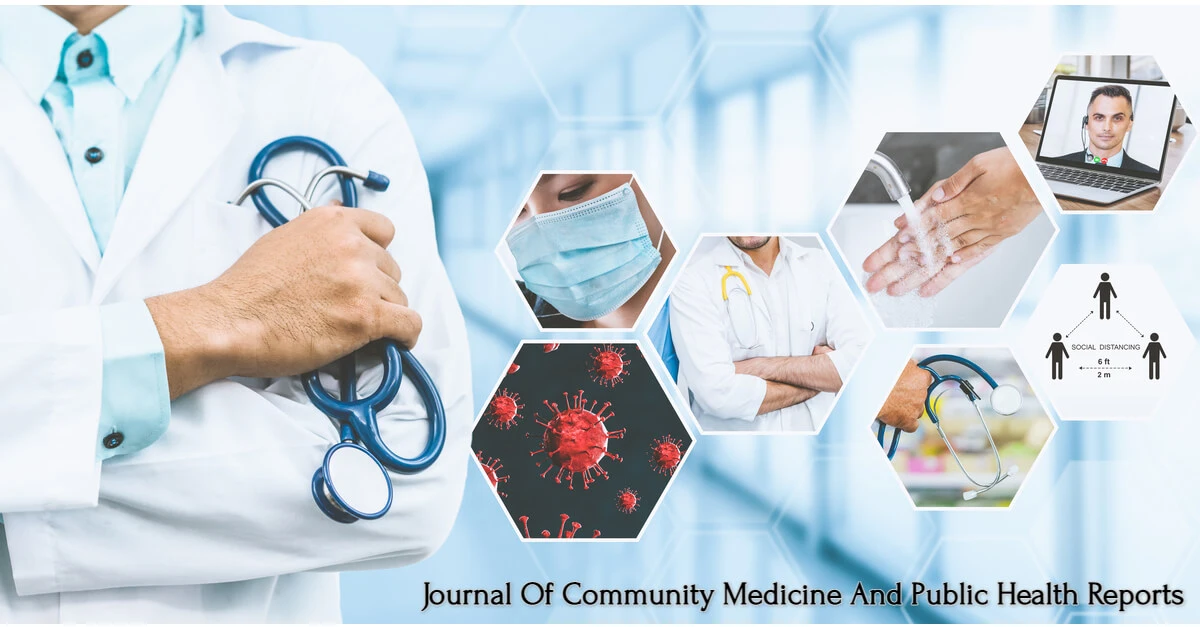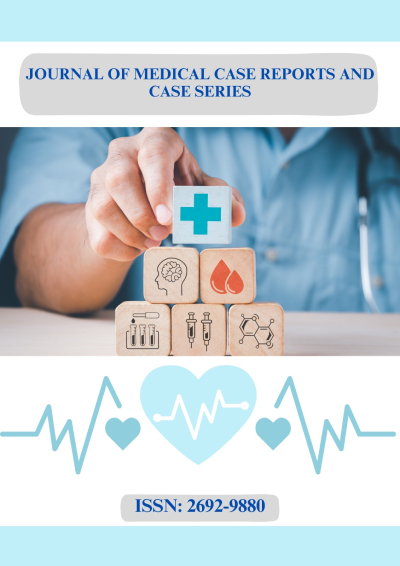Prakash Shashi*
Nursing Faculty, Govt. College of Nursing, S. N. Medical College, Agra, Uttar Pradesh, India.
*Corresponding Author: Prakash Shashi, Nursing Faculty, Govt. College of Nursing, S. N. Medical College, Agra, Uttar Pradesh, India.
Abstract
Mucormycosis is an angioinvasive fungal infection, due to fungi of the order Mucorales. Its incidence cannot be measured exactly, since there are few population-based studies, but severalstudies have shown that it is increasing. The incidence of mucormycosis in India is about 80 times the incidence in developed countries. COVID-19 has been associated with a wide range of secondary bacterial and fungal infections, but India's second wave of COVID-19 has created a perfect environment for mucormycosis. Low oxygen, diabetes, high iron levels, immuno-suppression, coupled with several other factors including long hospitalization with mechanical ventilators, creates an ideal environment for catching mucormycosis, Diabetes mellitus is the main underlying disease globally, especially in low and middle-income countries. The epidemiology of mucormycosis is evolving as new immunomodulating agents are used in the treatment of cancer and autoimmune diseases. In addition, new risk factors are reported from Asia, including post-pulmonary tuberculosis and chronic kidney disease. New emerging species include Rhizopus homothallicus, Thamnostylumlucknowense, Mucor irregularis and Saksenaeaerythrospora. Diagnosis of mucormycosis remains challenging. The main nursing consideration during this pandemic with new arrival of disease is cautious measurement of vitals functioning, heath history and physical examination, and maintaining personal hygiene etc.
Keywords: Mucormycosis; nursing consideration; Patient care; Immunosuppression
Introduction
Even as the country is fighting with the Covid-19 pandemic additional outbreak of a deadly disease has put the authorities on high alert. Mucormycosis is an increasingly common fungal infection with unacceptably high mortality across India. Mucormycosis is a serious but rare fungal infection caused by a group of Molds called mucoromycetes. These Molds/ fungi live throughout the environment. Enters the skin through a cut, burn, or other types of skin trauma Mucormycosis is manifested by a variety of different syndromes in humans, mainly in immunocompromised patients and those with diabetes mellitus [1]. Worrying rhino-orbital-cerebral and pulmonary infections are the most common disorders caused by these fungi.
“Mucor” is a fungus which is normally present in the environment and in soil. It causes disease only when immunity is critically low. Mucormycosis is not a new disease. It is known to occur in patients with low immunity such as in uncontrolled diabetes, post-transplant, and some cancer treatments [2]. A sudden surge is being reported in Mucormycosis in cases with COVID-19. It is a rare but serious complication of Covid-19. Infection with Mucormycosis can cause loss of eye and may be life-threatening. Mucor infection may occur during Covid-19 infection or a few weeks after recovery from Covid- 19.
Causes of Mucor surge
COVID-19 has a tendency to worsen diabetes and also cause diabetes in previously normal individuals. The Covid 19 infection itself causes decrease in some types of white blood cells and decrease in immunity. Some medicines like Steroids and Tocilizumab used for treatment of Covid-19 infection can worsen immune status.
The severity of Mucor infection is largely dependent on the patient’s immunity and general health. If Covid – 19 infection, high blood sugar levels, and immunosuppressive treatments are all present then the risk from infection increases [3,4].
Pathogenesis:
Rhino-orbital-cerebral and pulmonary mucormycosis are acquired by the inhalation of spores. In healthy individuals, cilia transport these spores to the pharynx and they are cleared through the gastrointestinal tract. In susceptible individuals, infection usually begins in the nasal turbinates or the alveoli [5]. The agents of mucormycosis are angioinvasive; thus, infarction of infected tissues is a hallmark of invasive disease [6].
It is transmitted by air borne asexual spore, after inhalation of the spore,
Alarming symptoms to watch for
Rhino cerebral Mucormycosis infection generally starts in the nose and may progress to the Eye and the Brain.
Nose and sinuses Mucor infection (relatively early disease)Early detection at this stage can enable early treatment and minimize complications.
1. Headache and nasal obstruction- especially if persistent or severe and not responding to pain medicines.
2. Nasal crusting and nasal discharge which could be brownish or blood tinged
3. Pain or loss of sensation on the face
4. Discolouration of the skin of face / localised Facial puffiness
5. Loosening of teeth/ discoloration or ulceration of palate [5-6]
Eye / Orbital Mucor infection (moderately advanced disease)
1. Eye swelling or redness, double vision, loss of vision, Eye pain, drooping eyelid
Who is most at risk?
1. Uncontrolled diabetes
2. Immunosuppression by steroids
3. Prolonged ICU stays
4. Comorbidities post-transplant/malignancy
5. Kidney disease
6. Cancer
7. Heart disease. [7]
Prevention of the infection
1. Use a mask if visiting a dusty construction site
2. Wear shoes, long trousers, long sleeve shirts and gloves while handling soil.
3. Maintain personal hygiene. [8]
When to Suspect Black Fungus Infection
1. A black fungus infection may be suspected in COVID-19 patients, diabetics or immunosuppressed individuals if they develop –
2. Sinusitis – nasal blockade or congestion, nasal discharge (blackish/bloody), local pain on the cheek bone
3. One sided facial pain, numbness or swelling.
4. Blackish discoloration over bridge of nose/palate.
5.Toothache, loosening of teeth, jaw involvement.
6. Blurred or double vision with pain; fever, skin lesion; thrombosis & necrosis (eschar).
7. Chest pain, pleural effusion, haemoptysis, worsening of respiratory symptoms. [10]
Do’s & Dont’s for patients
Dent’s
1. Self-medicate, especially steroids
2. Delay reporting symptoms of Mucor
3. Ignore medical advice
Do’s
1. Give the history of diabetes to a doctor
2. Get Sugar levels checked
3. Watch for early signs of Mucor listed above.
4. Maintain basic hygiene and cleanliness.
5. Follow medical advice; Take complete course of treatment as suggested by doctor.
What to do if you have these symptoms?
1. Consult your doctor immediately.
2. Doctor will examine you clinically. If required, the doctor will take swabs from the nose and test them for fungus.
3. If the infection is strongly suspected or confirmed, you may need treatment with antifungal medications and surgery [3,4].
Nursing consideration
Nursing Assessment
Assessment is the first step in the care of mucormycosis with or without COVID 19 patients which involves critical thinking skills, clinical judgment, risk identification, history, physical examination and appropriate decision-making strategies by the nurses.
History Collection
1. Clinical signs of rhino cerebral mucormycosis are nonspecific, impeding early diagnosis. Symptoms are mostly associated with the involvement of the head region. One-sided headache behind the eyes and lethargy are the earlier presentation.
2. Other general presentation includes nausea, fever, nasal congestion and rhinorrhea, epistaxis, nasal hypoesthesia, facial pain and numbness, history of black nasal discharge and sinusitis.
3. Common eye complaints are retro-orbital or periorbital pain, amaurosis, diplopia, blurring of visions.
4. CNS involvement presents with convulsions, dizziness, altered mental status, and gait.
5. In widespread cases, respiratory involvement shows the difficulty in breathing, cough, and hemoptysis.
6. Vomiting and abdominal pain are common in gastrointestinal involvement.
Physical Examination
1. Nasal and orbital cellulitis, reddened and swelling of nasal bridge and skin of cheek in later stages, and eventually turn black due to cell death are the common findings.
2. Black eschar visible on nasal mucosa or palatine mucosa.
3. Bleeding from the nose may be present in severe cases.
4. Intraoral examination can show palatal ulceration.
5. Some series of studies revealed proptosis as the most common orbital sign followed by ophthalmoplegia and visual loss.
6. Other eye signs are conjunctival chemosis, nystagmus, and fixed pupil.
7. Patients with cerebral involvement and vascular compromise may be in a coma or may show signs of a stroke.
8. Neurological examination may reveal palsies of loss of second to seventh cranial nerves.
9. Monitoring and controlling of the sugar levels during COVID with or without steroids.
10. Cautious use of steroids observing correct timing, correct dose and correct duration.
11. To use clean, sterile water for humidifiers during the oxygen therapy.
12. Always use distilled or sterile water, never use unboiled tap water or mineral water, fill up to about 10 mm below the maximum fill line, check the water level twice daily and top it up as necessary.
13. Once a week (for the same patient) and in between patients, all the components of the humidifier should be soaked in a mild antiseptic solution for 30 minutes, rinsed with clean water and dried in air.
Monitoring Protocols:
1. Regularly assess and control blood sugar levels, particularly during steroid therapy.
2. Use sterile water for humidifiers in oxygen therapy and maintain strict hygiene protocols.
Conclusion
Mucormycosis is a life-threatening fungal infection that occurs in immunocompromised patients. Increase in mucormycosis in Indian setting appears to be an incredible connection of three of diabetes (high prevalence genetically), widespread use of corticosteroid (increases blood glucose and opportunistic fungal infection) and COVID-19 (cytokine storm, lymphopenia, endothelial damage). To mitigate this risk, healthcare providers must prioritize effective glycemic control and judicious use of immunosuppressive therapies. Collaborative efforts in prevention, early detection, and management are crucial to improve patient outcomes in the face of this complex fungal infection.
Compliance with Ethical Standards
Funding: None
Conflict of Interest: None
References
- Kauffman C.A, Malani A.N (2007) Zygomycosis: An emerging fungal infection with new options for management. Current Infectious Disease Reports. 17(9): 435-440.
- Ambrosioni J, Bouchuiguir-Wafa K, Garbino J (2010) Emerging invasive zygomycosis in a tertiary care center: Epidemiology and associated risk factors. International Journal of Infectious Diseases. 14(3): e100-e103.
- All India Institute of Medical Sciences. (2021) Mucormycosis clinical care guidelines.
- Cornely O.A, Alastruey-Izquierdo A, Arenz D, Chen S.C.A, Dannaoui E, et al. (2019) Global guideline for the diagnosis and management of mucormycosis: An initiative of the European Confederation of Medical Mycology in cooperation with the Mycoses Study Group Education and Research Consortium. Lancet Infectious Diseases. 19(12): e405-e421.
- Greenberg R.N, Scott L.J, Vaughn H.H, Ribes J.A (2009) Zygomycosis (mucormycosis): Emerging clinical importance and new treatments. Current Opinion in Infectious Diseases. 15(9): 517-25.
- Frater J.L, Hall G.S, Procop G.W (2006) Histologic features of zygomycosis: Emphasis on perineural invasion and fungal morphology. Arch Pathol Lab Med. 125(3): 375-8.
- Roden MM, Zaoutis TE, Buchanan WL, Knudsen TA, Sarkisova TA, et al. (2005). Epidemiology and outcome of zygomycosis: A review of 929 reported cases. Clinical Infectious Diseases. 41(5): 634-53.
- Jeong W, Keighley C, Wolfe R, Lee W.L, Slavin M.A, et al. (2019) The epidemiology and clinical manifestations of mucormycosis: A systematic review and meta-analysis of case reports. Clinical Microbiology and Infection. 25(1): 26-34.
- Reid G, Lynch J.P, Fishbein M.C, Clark N.M (2020) Mucormycosis. Seminars in Respiratory and Critical Care Medicine. 10(3): 99-114.
- Prakash H, Ghosh A.K, Rudramurthy S.M, Singh P, Xess I, et al. (2019) A prospective multicenter study on mucormycosis in India: Epidemiology, diagnosis, and treatment. Medical Mycology. 57(9): 395-402.



